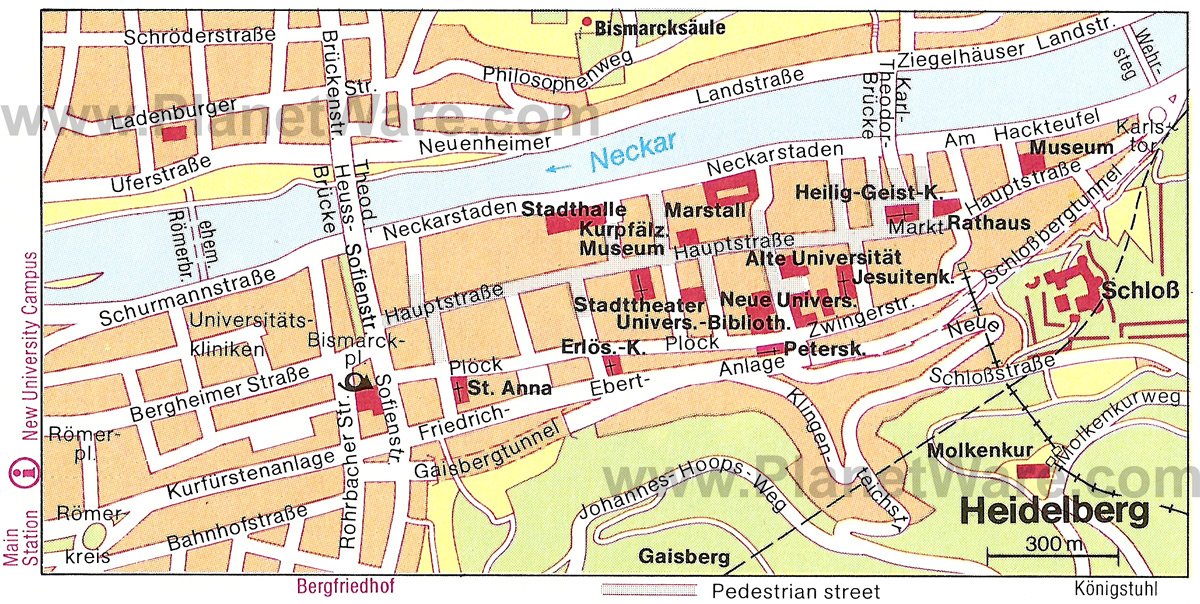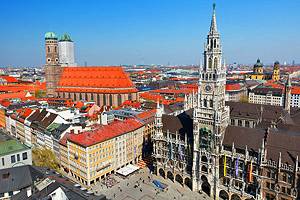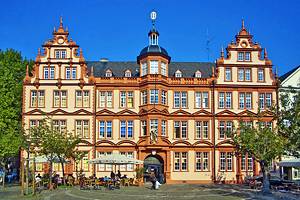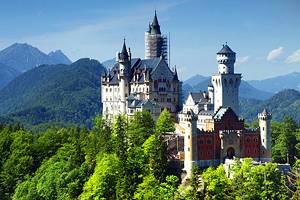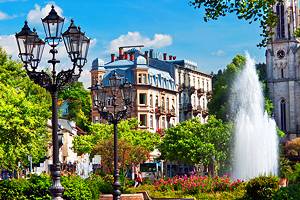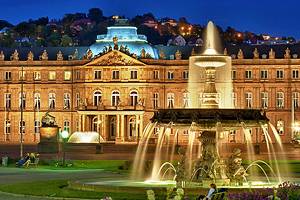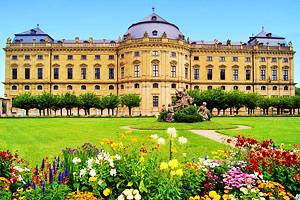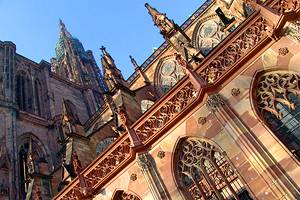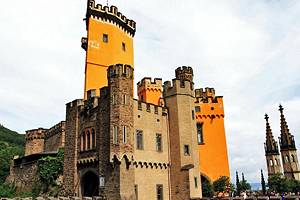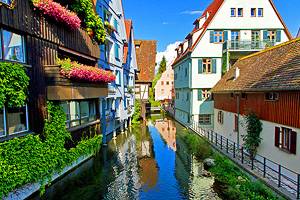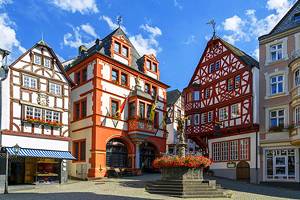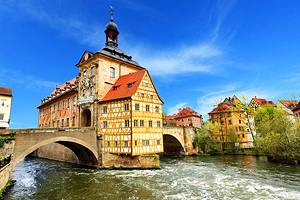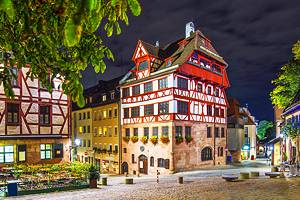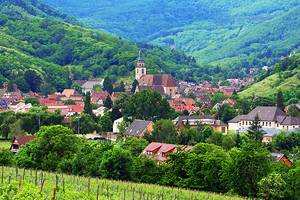15 Top Attractions & Things to Do in Heidelberg
Heidelberg is one of the most romantic cities in Germany, thanks to its picturesque riverside location, its beautiful old buildings and bridges, and the castle ruins that overlook the town center. Attracting nearly four million visitors each year, this city is chock-full of historic sites and attractions for tourists, as well as excellent dining and entertainment experiences.

The old capital of the Palatinate and an ancient university town celebrated in song and poetry, Heidelberg lies at the point where the Neckar river emerges from the hills of the Odenwald into the Rhine plain. It's also one of the warmest places to visit in Germany, as evidenced by sightings of the occasional almond, fig, and olive tree, as well as its wild African parakeets.
The city also offers plenty of free things to do: stroll through the charming old town and across the bridge to take in the views from Philosophers' Way and the charming Heiligenberg. Find out more with our list of the top tourist attractions and things to do in Heidelberg.
- Heidelberg Castle
- Hauptstrasse and the Altstadt (Old Town)
- Church of the Holy Spirit
- Heidelberg University
- Cross the Karl Theodor Bridge
- Follow The Philosophers' Way
- Schloss Schwetzingen
- Ride the Railway to Königstuhl (The King's Seat)
- Day Trip to Bad Wimpfen
- Heidelberg Zoo and Germany's Oldest Botanic Garden
- The Palatinate Museum (Kurpfälzisches Museum)
- Climb to the Heiligenberg
- Dilsberg Fortress (Burgfeste Dilsberg)
- Cruise along the Neckar
- The German Pharmacy Museum
Heidelberg Castle
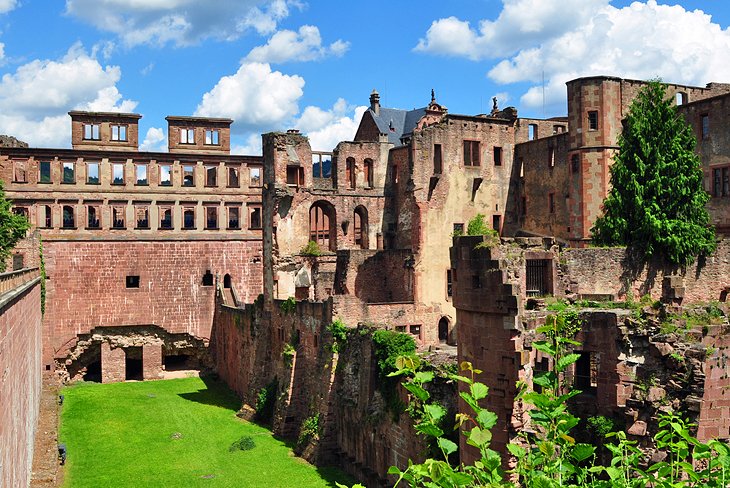
Mark Twain said of Heidelberg Castle that "A ruin must be rightly situated, to be effective. This one could not have been better placed." Built of red Neckar sandstone on the terraced hillside nearly 200 meters directly above Heidelberg's Old Town, this 16th-century castle is one of the best examples of German Renaissance architecture.
After its destruction by the French, who devastated the Palatinate in the 17th century, it has remained the largest and most picturesque such ruin, and one of the best castles in Germany.
The castle is the site of many festivals, most held in its evocative courtyard, where there are also frequent theater performances, concerts, and fireworks displays. One of the most popular events is the Heidelberg Castle Festival from June to August, which features an eclectic mix of theater, choral music, chamber orchestras, jazz, folk, and opera.
Heidelberg Castle can be reached by the Bergbahn, a funicular railway running from the Kornmarkt, or via a 15-minute walk from the Old Town.
Address: Schlosshof 1, Heidelberg
Hauptstrasse and the Altstadt (Old Town)
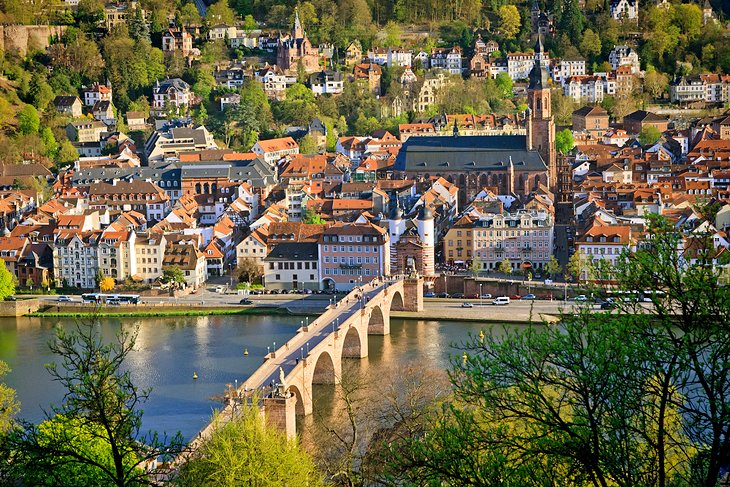
Heidelberg's Hauptstrasse is the place to start exploring this beautiful city. From this narrow main street, you'll find countless even narrower side streets and alleyways just begging to be explored, each bursting with things to see: unspoiled medieval architecture, splendid old churches, boutique shops, galleries, cafés, and restaurants.
Highlights include the early 15th-century Heiliggeistkirche, the Church of the Holy Spirit, and Haus zum Ritter, a Renaissance building dating from 1592. Other highlights include the Neckarstaden where you'll find Marstall, the old court stables and home of Heidelberg University's art collection, as well as the Stadthalle adjoining the landing stages for the many boats that take tourists for cruises along the castle-lined Neckar.
In December, the outstanding Heidelberg Christmas Market is so large it fills five city squares; one becomes a public skating rink, while the Kornmarkt is transformed into a fairy-tale scene with the lighted castle towering above.
Read More: Top Christmas Markets in Germany
Church of the Holy Spirit

Its Baroque spire a landmark of the old town, the Church of the Holy Spirit is in the center of Heidelberg's market square. The foundations were laid in 1398, but it wasn't until 1544 that the tower was completed. The tower you see today, however, was built in 1709 after the church had been set on fire by the French in the War of the Palatine Succession.
The church is an example of early ecumenism, or at least of peaceful co-existence between Catholics and Protestants, each of whom used it, and often at the same time. In 1706, a partition was built so each could hold services simultaneously; the wall was removed in 1936 and the church is now Protestant.
For a view of the town, river, and castle, climb the 200 steps to the tower.
Heidelberg University
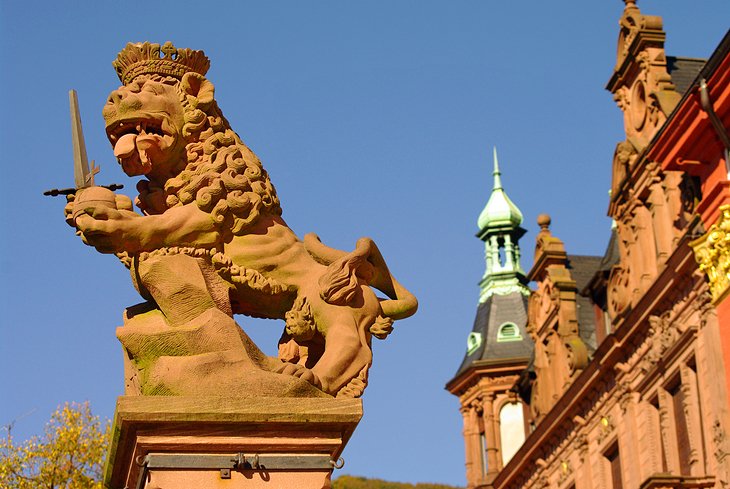
On the south side of the Hauptstrasse lies Universitätsplatz, with the Old University dating back to 1711. On its east side, in Augustinergasse, is the Pedellenhaus with the former Student Prison, Karzer, which for many is the most memorable part of a visit to Heidelberg University.
Here, students found guilty of misdeeds (such as dueling or disturbing the peace by singing at night) were incarcerated for 24 hours. While there, they decorated the walls with graffiti that remains today.
The New University was built in 1928-31, behind which rises the Hexenturm, or Witches' Tower, once part of the town's fortifications. Nearby, in Grabengasse, you'll find the richly stocked University Library whose principal treasure is the 14th-century Manessische Handschrift, an illuminated manuscript of medieval songs.
Take time to see the Seminargebäude, the Mensa students' refectory, and the 15th-century Peterskirche, a tiny chapel now used mainly as the university church.
Address: Grabengasse 1, Heidelberg
Cross the Karl Theodor Bridge
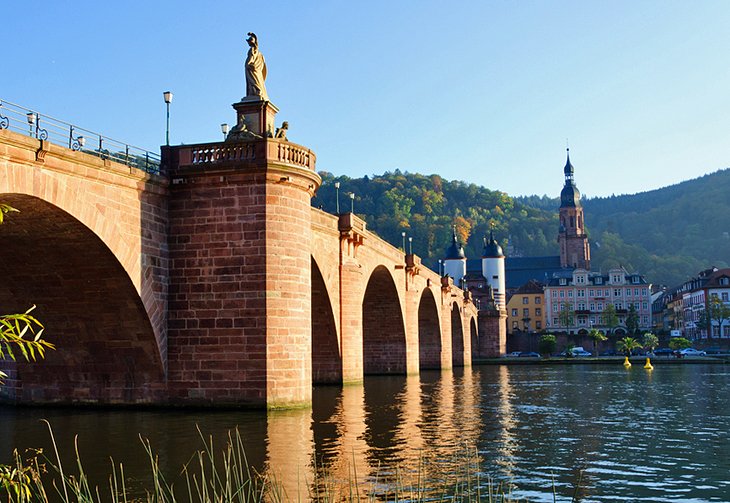
Also known as the Old Bridge, Heidelberg's spectacular Karl Theodor Bridge has been immortalized in numerous poems and paintings, a testament to the romanticism that surrounds the structure.
Spanning the Neckar and joining the two sides of historic Heidelberg, the famous bridge with its lovely sculptures is named after the man responsible for designing and building its nine red sandstone arches in 1788 as a replacement for the numerous wooden bridges that came before. The bridge is well worth strolling along for its views of Heidelberg and its sister bridge, the twin-towered Brückentor.
Follow The Philosophers' Way
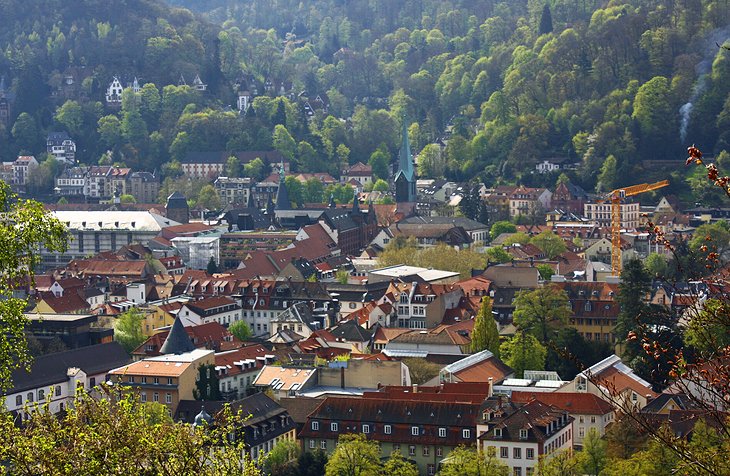
Among the most romantic things to do in Heidelberg is a stroll along the well-marked Philosophenweg, or Philosophers' Way.
On the north side of the Neckar, this wonderful pathway runs along the side of Heiligenberg, or Saints' Mountain, and is where the university's philosophers would walk and carry on discussions as they admired the scenery.
It's not hard to see the attraction: the views across the Neckar to the old town are beautiful, and the riverside creates a microclimate where plants from more southern climates flourish, among them Japanese cherries, cypresses, and even lemons. This was a favorite walk of Mark Twain when he was visiting Heidelberg.
Schloss Schwetzingen
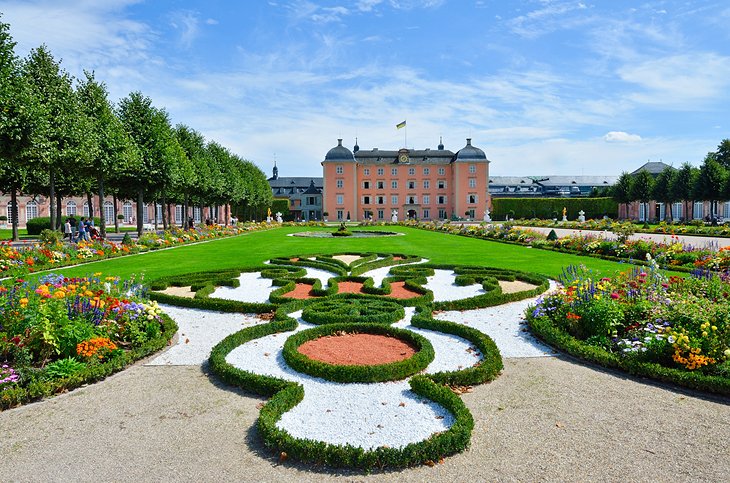
About 12 kilometers west of Heidelberg, in the Rhine plain, is Schwetzingen, famous for its spectacular 18th-century palace. Schloss Schwetzingen was built as the summer residence of the Electors of the Palatinate, and today is as well known for its superb program of summer concerts as it is for its lovely gardens.
Covering more than 180 acres, Schlossgarten was laid out in a mix of French and English styles and contains a number of 18th-century buildings, including a Rococo theater, built between 1746-52, and a mosque.
Excellent guided tours are available and are well worth the small additional cost. If possible, plan your visit to coincide with the Schwetzingen Festival, an annual event held from late April through mid-June that includes opera, symphonic, choral, and chamber concerts, as well as recitals and dance performances. Events take place both inside the Schwetzingen Palace - appropriate, given the fact Mozart performed here as a seven-year-old - and outdoors in the Palace Park.
Address: Schloss Mittelbau, Schwetzingen
Ride the Railway to Königstuhl (The King's Seat)
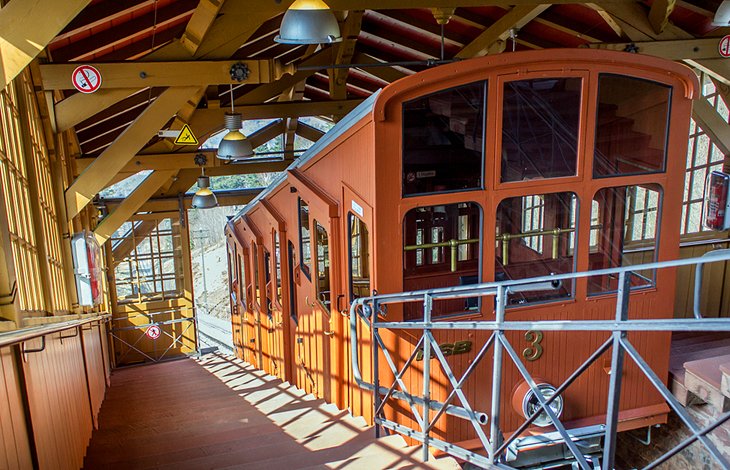
Just seven kilometers east of Heidelberg, the Königstuhl — or King's Seat — is a hill rising 567 meters (1860 feet) with spectacular views as far as the Rhine Valley. Access to the summit, part of the Odenwald Mountains, is via the Heidelberg Mountain Railway, the same funicular railway that takes visitors to Heidelberg Castle.
It's an excellent place to explore the beautiful countryside surrounding Heidelberg, especially as the difficult part — getting there and back — is taken care of via the railway. To get there, ride one stop beyond the castle to Molkenkur, where you change to the historic 1907 wooden car to reach the summit.
Day Trip to Bad Wimpfen

Less than an hour's drive from Heidelberg is the old spa town of Bad Wimpfen, with its beautifully preserved medieval center. Almost untouched by both World Wars, the town's winding narrow streets are lined with half-timbered buildings.
Highlights are the Kaiserpfalz (the Staufen Imperial Palace) and the Blauer Turm (Blue Tower), built about 1200 and used as a watchtower through the mid-19th century. You can climb to the top for views over the town and its fascinating pattern of steep-pitched rooftops.
Inside the palace, the arcades in the Great Hall are decorated with intricate stone carvings and are among the finest examples of German Romanesque architecture. For the ambitious, a hiking trail, the Neckarsteig, connects Bad Wimpfen to Heidelberg.
Heidelberg Zoo and Germany's Oldest Botanic Garden

The Heidelberg Zoo is certainly worth a visit, particularly if traveling with youngsters. On the north bank of the Neckar, this zoological park has more than 1,100 animals encompassing some 250 species.
A registered member of the European Endangered Species Program (EEP), as well as West African Primate Conservation Action (WAPCA), the zoo has a special focus on conservation and breeding programs for endangered species.
A short walk away, the Botanischer Garten is adjacent to the university. Established in 1593, it's one of the oldest — and largest — botanical gardens in Germany.
Another great place for a garden stroll is Skulpturenpark Heidelberg, a sculpture park, which is also next to the university.
Address: Tiergartenstrasse 3, Heidelberg
The Palatinate Museum (Kurpfälzisches Museum)
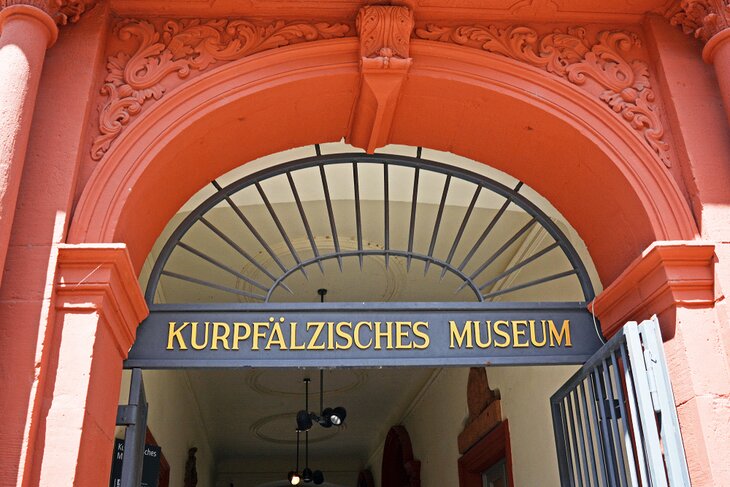
Halfway along the Hauptstrasse in Heidelberg, in the Baroque Palais Morass, is the excellent Palatinate Museum. Founded in the late 1870s, the museum is home to a collection that includes a cast of the lower jaw of the 500,000-year-old Heidelberg Man, discovered near here in 1908.
The museum's Applied Arts collection has many fine examples of area porcelain, as well as medallions, coins, and glassware. Also of interest are the sculptures from the 12th to 20th centuries, including old gravestones and early Baroque sculptures.
Address: Hauptstrasse 97, Heidelberg
Climb to the Heiligenberg
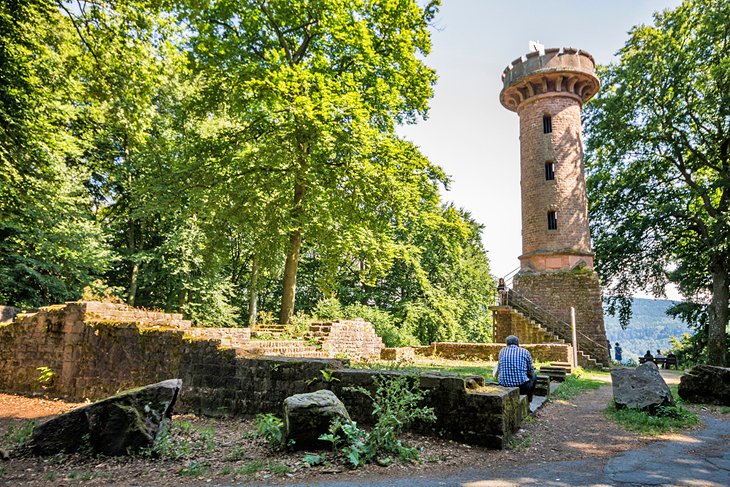
The Heiligenberg is a hill that rises more than 400 meters (over 1,300 feet) on the opposite side of the Neckar from the Altstadt. You can explore it from the Schlangenweg, a winding path that begins just above the Old Bridge and climbs through vineyards and into the forest, crossing the Philosophers' Way and opening to occasional views of the city and Neckar Valley.
At the top sits the ruins of Michaelskloster, the Monastery of St. Michael, built in the 11th century and abandoned in the 16th century. The adjoining Thingstätte is a Nazi-era amphitheater, and at the top is also the Heiligenberg Aussichtsturm, an old observation tower.
Dilsberg Fortress (Burgfeste Dilsberg)
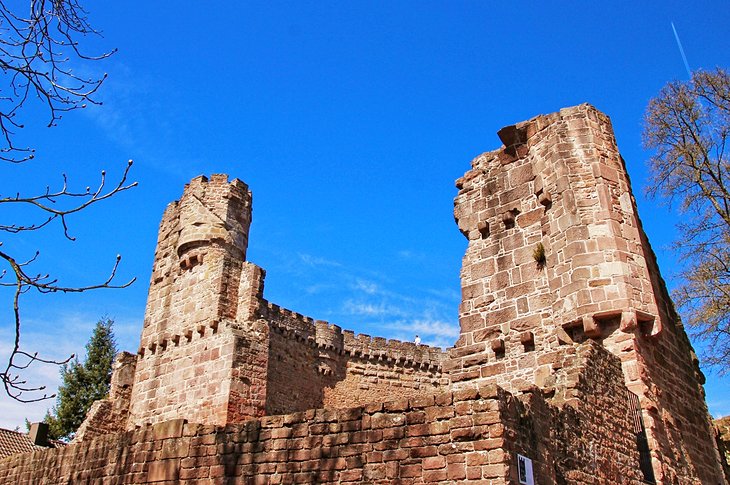
The 12th-century castle fortress of Dilsberg crowns a hilltop above the Neckar river about a 30-minute drive from Heidelberg, outside the town of Neckargemünd. Dilsburg was long considered impregnable and could withstand long sieges but was finally conquered during the Thirty Years War.
It was not destroyed, however, and continued in use until the 19th century, when it was abandoned and some of its stones used for other buildings. By the 20th century, however, its historic value was recognized and with that came interest in stabilizing and protecting it.
One of the reasons it was able to withstand sieges was its 46-meter-deep well. Above the waterline in the well is a tunnel that travels under the castle's courtyard, the 80-meter-long Brunnenstollen, believed to have been a ventilation shaft. You can explore this somewhat spooky tunnel and climb the hexagonal tower to reach the high outer walls for sweeping panoramas.
Cruise along the Neckar
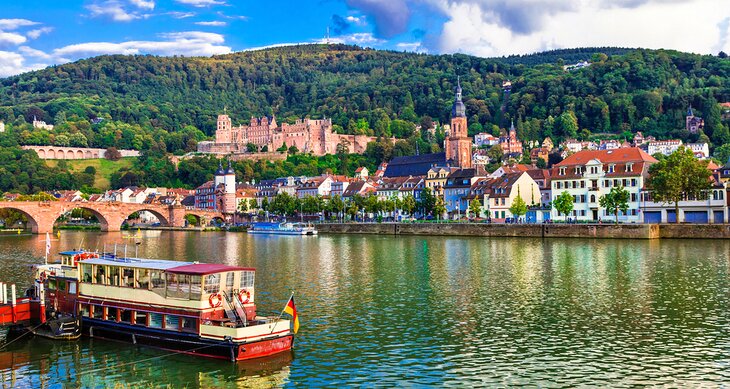
One of the loveliest ways to explore a riverside city and its surrounds is by boat, and Heidelberg's position on the Neckar River means that there are plenty of chances to get this unique perspective.
The Weiss Flotte line offers several cruises on the Neckar. If you are short on time, their 50-minute sightseeing cruise is a great introduction to the area that includes views of Heidelberg Castle from the water.
If you have more time, a three-hour castle tour floats past Neckarsteinach's four castles, as well as past Neuburg Abbey and through the Neckartal-Odenwald Nature Park. This cruise also has hop-on-hop-off options, so you can do some exploring while you're at it. The line also offers a river ferry service with five stops, as well as private and special events.
For something a little different, you can also opt to take a Neckar River sightseeing cruise on the Neckarsonne, which claims to be the world's largest solar-powered catamaran. This boat offers both open-deck and indoor seating with glass-paneled walls, and it is wheelchair-accessible.
The German Pharmacy Museum
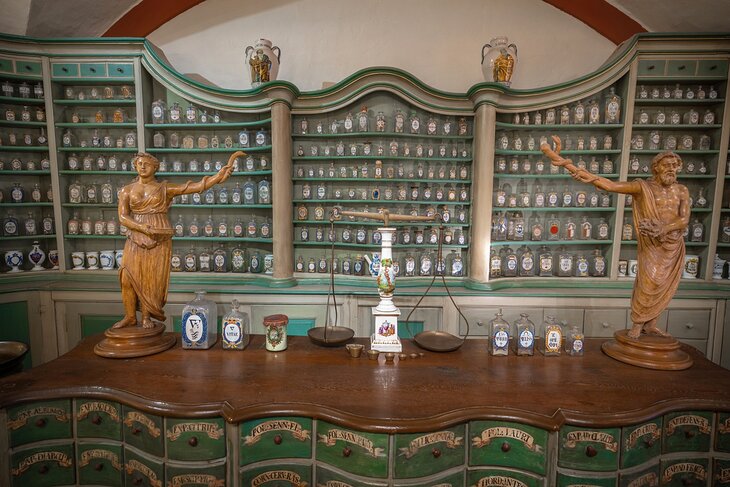
On the grounds of Heidelberg Castle, the German Pharmacy Museum covers the history of apothecaries during the 18th and 19th centuries. Displays include fascinating old instruments and equipment for grinding, blending, distilling, and otherwise preparing the remedies. Others show examples of the various elements that went into these preparations, including plants, minerals, and animal-based materials.
A few of the exhibits are interactive, and although the labeling is in German, a very good audio guide is available. The containers, many of them in porcelain and labeled in perfect script, are displayed in Baroque cabinets, and the museum includes the original interiors of 18th- and 19th-century pharmacies.
Address: Schloss Heidelberg, Heidelberg
More Related Articles on PlanetWare.com
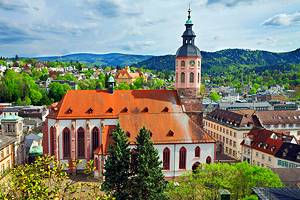
Places to Visit near Heidelberg: Any direction you travel from Heidelberg will bring you to at least one of the highlights of Germany. To the south are the lively city of Stuttgart and the beautiful Black Forest region of Baden-Württemberg. To the north is Frankfurt, and our page on Day Trips from Frankfurt is filled with ideas on where to go from there.

Exploring More of Germany: Heidelberg is not the only German city with an Old Town filled with beautiful historic buildings. Nuremberg has been almost completely restored, and on the way here, you can stop in the almost entirely original medieval town of Rothenburg-ob der-Tauber, one of the top tourist attractions in Germany.
